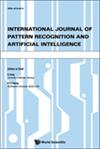MSFE-PANet:基于yolov4的复杂场景小目标检测改进方法
IF 1.1
4区 计算机科学
Q4 COMPUTER SCIENCE, ARTIFICIAL INTELLIGENCE
International Journal of Pattern Recognition and Artificial Intelligence
Pub Date : 2023-08-01
DOI:10.1142/s0218001423500246
引用次数: 0
摘要
随着计算机视觉和人工智能技术的飞速发展,视觉目标检测取得了前所未有的进步,复杂场景中的小目标检测越来越受到人们的重视。解决复杂场景中小目标检测中的模糊、重叠和遮挡问题。提出了一种多尺度融合特征增强路径聚合网络MSFE-PANet。通过加入注意机制和特征融合,增强了深层特征图的强定位信息和浅层特征图的强语义信息的融合,有助于网络在复杂场景中发现感兴趣的区域,提高网络对小物体的敏感性。设计了抑制损失函数和网络预测尺度,以解决复杂背景下小目标重叠和阻塞的缺失检测和误检问题。该方法在VisDrone2021数据集上的准确率为40.7%,在PASCAL VOC数据集上的准确率为89.7%。通过与主流目标检测算法的对比分析,证明了该方法在复杂场景中检测小目标的优越性。本文章由计算机程序翻译,如有差异,请以英文原文为准。
MSFE-PANet: Improved YOLOv4-based Small Object Detection Method in Complex Scenes
With the rapid development of computer vision and artificial intelligence technology, visual object detection has made unprecedented progress, and small object detection in complex scenes has attracted more and more attention. To solve the problems of ambiguity, overlap and occlusion in small object detection in complex scenes. In this paper, a multi-scale fusion feature enhanced path aggregation network MSFE-PANet is proposed. By adding attention mechanism and feature fusion, the fusion of strong positioning information of deep feature map and strong semantic information of shallow feature map is enhanced, which helps the network to find interesting areas in complex scenes and improve its sensitivity to small objects. The rejection loss function and network prediction scale are designed to solve the problems of missing detection and false detection of overlapping and blocking small objects in complex backgrounds. The proposed method achieves an accuracy of 40.7% on the VisDrone2021 dataset and 89.7% on the PASCAL VOC dataset. Comparative analysis with mainstream object detection algorithms proves the superiority of this method in detecting small objects in complex scenes.
求助全文
通过发布文献求助,成功后即可免费获取论文全文。
去求助
来源期刊
CiteScore
2.90
自引率
13.30%
发文量
201
审稿时长
15.8 months
期刊介绍:
The International Journal of Pattern Recognition and Artificial Intelligence (IJPRAI) welcomes both theory-oriented and innovative applications articles on new developments and is of interest to both researchers in academia and industry.
The current scope of this journal includes:
• Pattern Recognition
• Machine Learning
• Deep Learning
• Document Analysis
• Image Processing
• Signal Processing
• Computer Vision
• Biometrics
• Biomedical Image Analysis
• Artificial Intelligence
In addition to regular papers describing original research work, survey articles on timely and important research topics are highly welcome. Special issues with focused topics within the scope of this journal are also published.

 求助内容:
求助内容: 应助结果提醒方式:
应助结果提醒方式:


